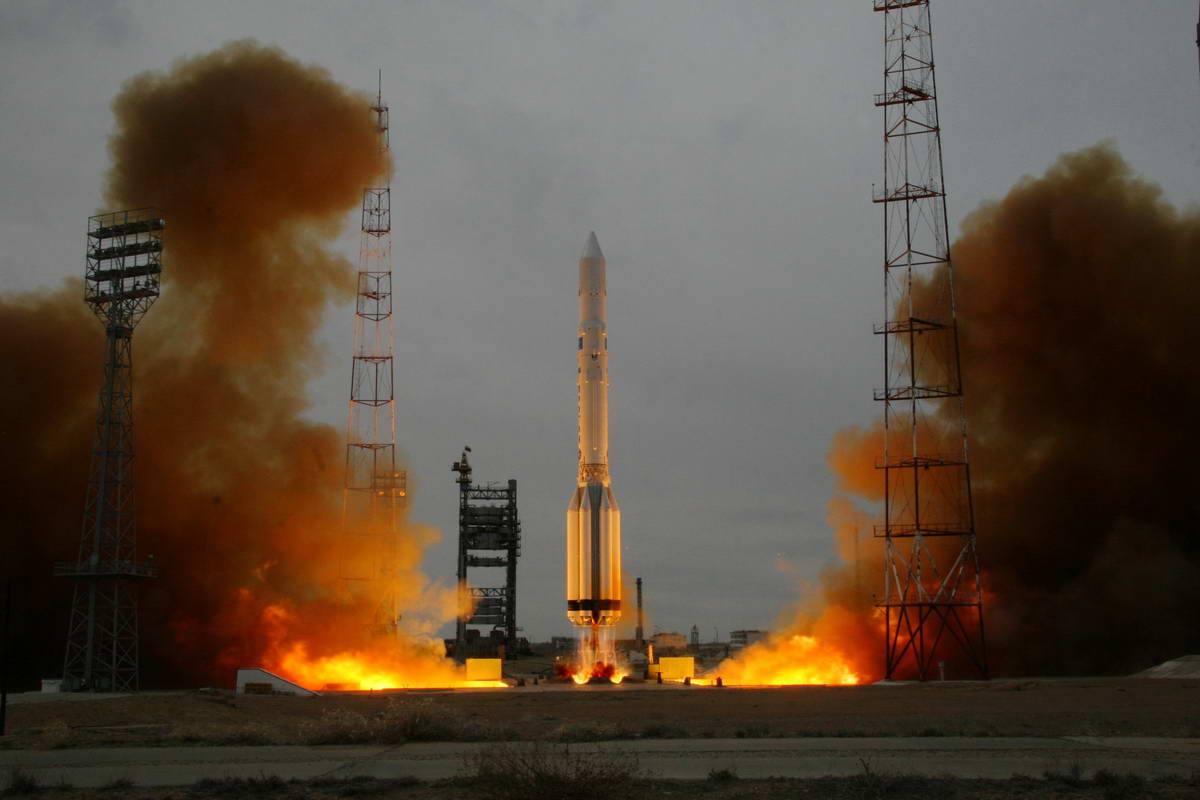Previous Spaceflight Launches
Filter by Agency, Locations or Vehicles
Show All LaunchesN1 | Zond-M 1
Russian Federal Space Agency (ROSCOSMOS) | RussiaBaikonur Cosmodrome, Republic of Kazakhstan
Feb. 21, 1969, 9:18 a.m.
Proton | Luna-15a
Russian Federal Space Agency (ROSCOSMOS) | RussiaBaikonur Cosmodrome, Republic of Kazakhstan
Feb. 19, 1969, 6:48 a.m.
Titan IIIC | TACSAT 1
Lockheed Martin | United States of AmericaCape Canaveral, FL, USA
Feb. 9, 1969, 9:09 p.m.
Status: Launch Successful
Mission:
TACSAT 1 (also TACOMSAT, Tactical Communications satellite) was the largest and most powerful communications satellite at the time when it was launched into synchronous orbit by a Titan-3C booster 9 February 1969, from Cape Canaveral, Florida. The experimental tactical communications satellite was designed and built by Hughes Aircraft Company, under the direction of the U.S. Air Force Space and Missile Systems Organization, for the Department of Defense.
Geosynchronous OrbitKosmos 11K63 | DS-P1-Yu 18
Strategic Rocket Forces | RussiaPlesetsk Cosmodrome, Russian Federation
Feb. 7, 1969, 1:59 p.m.
Thor Delta M | INTELSAT III F-3
McDonnell Douglas | United States of AmericaCape Canaveral, FL, USA
Feb. 6, 1969, 12:39 a.m.
Status: Launch Successful
Mission:
The Intelsat 3 spacecraft were used to relay commercial global telecommunications including live TV. Three of the 8 satellites in the series (F1, F5, F8) were unusable due to launch vehicle failures, and most of the remainder did not achieve their desired lifetimes.
Geostationary OrbitThorad SLV-2G Agena D | KH-4B 6
McDonnell Douglas | United States of AmericaVandenberg SFB, CA, USA
Feb. 5, 1969, 9:59 p.m.
Vostok 8A92M | Meteor-1 11
RKK Energiya | RussiaPlesetsk Cosmodrome, Russian Federation
Feb. 1, 1969, 12:11 p.m.
Thor Delta E1 | Isis 1
McDonnell Douglas | United States of AmericaVandenberg SFB, CA, USA
Jan. 30, 1969, 6:46 a.m.
Status: Launch Successful
Mission:
ISIS 1 (International Satellite for Ionosphere Studies) was an ionospheric observatory instrumented with sweep- and fixed-frequency ionosondes, a VLF receiver, energetic and soft particle detectors, an ion mass spectrometer, an electrostatic probe, an electrostatic analyzer, a beacon transmitter, and a cosmic noise experiment.
Elliptical OrbitTsiklon-2A | US-AO 5
Yuzhnoye Design Bureau | UkraineBaikonur Cosmodrome, Republic of Kazakhstan
Jan. 25, 1969, 11:14 a.m.
Status: Launch Failure
Mission:
US-A (Upravlenniye Sputnik Aktivny) were active radar satellites for ocean surveillance. The high power consumtion of the active radar required a nuclear reactor as power source. The satellites were known as RORSAT in the west. The US-AO series consisted of satellites, which tested all the system components but the nuclear reactor. They were battery powered.
Low Earth OrbitVoskhod | Zenit-4M 2
Soviet Space Program | RussiaBaikonur Cosmodrome, Republic of Kazakhstan
Jan. 23, 1969, 9:15 a.m.



